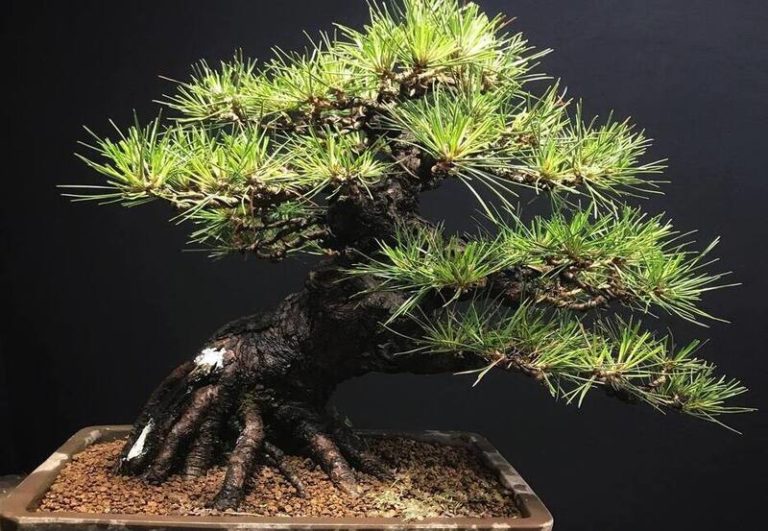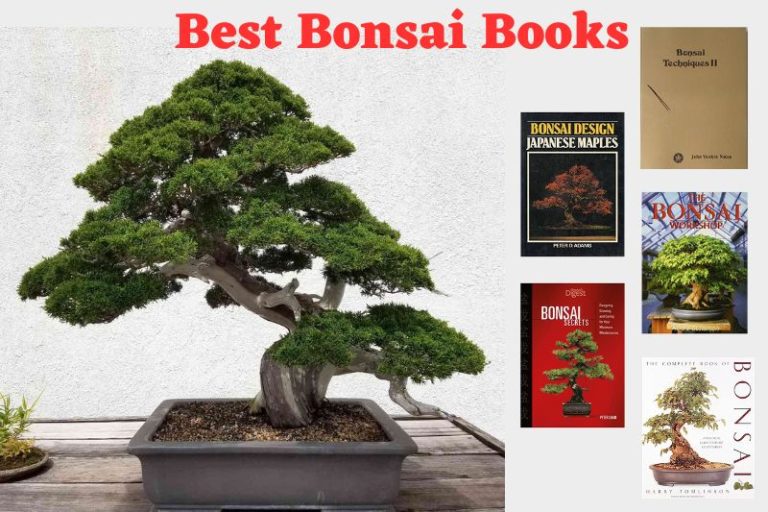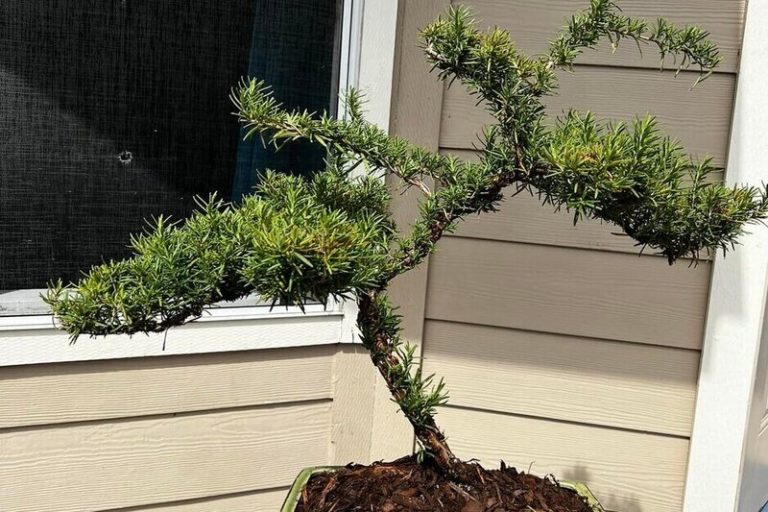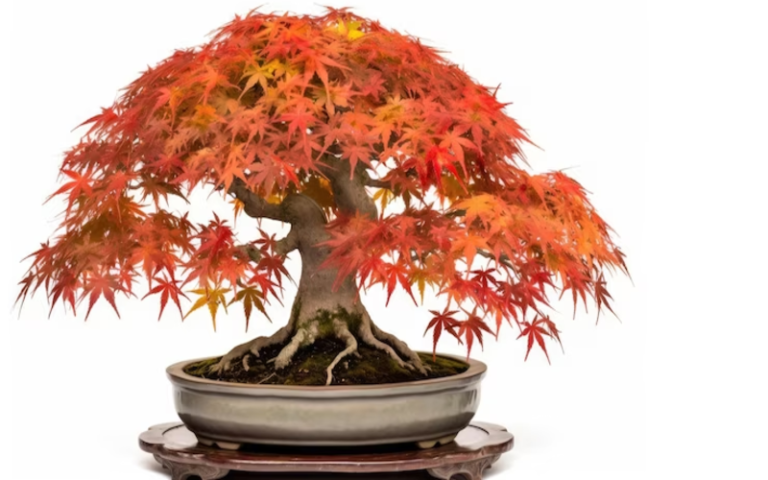Western Red Cedar Bonsai : Sculpting Nature’s Beauty
Western Red Cedar bonsai trees are beautiful tiny versions of the huge Western Red Cedar trees that grow in the wild. These tiny works of art bring the beauty of nature into your yard or home. In this article, we will explore simple and easy-to-follow tips for growing and caring for Western Red Cedar Bonsai, making it accessible even for beginners.
What is a Western Red Cedar Bonsai?
A Western Red Cedar Bonsai is a tiny tree made through the art of bonsai. A full-sized Western Red Cedar is carefully clipped and shaped to keep its small, attractive shape. Growing in pots, these bonsai trees have the same beautiful leaves that their bigger relatives do, which look like scales.
Western Red Cedar Bonsai are loved for their beauty as decorations and as live works of art that bring nature and peace to any room, indoors or out. Growing and shaping these tiny trees takes skill and care. When they are finished, they look like a beautiful small version of nature.
History and Origins of the Western Red Cedar Bonsai
Bonsai is an old art form that started in China more than a thousand years ago and later spread to Japan. Western Red Cedar Bonsai has its roots in this art form. Chinese scholars and monks were the first people to grow and shape tiny trees. They did this by putting small trees in pots and leaving them alone to meditate.
Growing bonsai became a very polished art form in Japan, and different kinds of trees, like Western Red Cedar (Thuja plicata), started to be used to make bonsai. Some history records don’t go into great detail about how Western Red Cedar was used for bonsai, but it’s likely that the species got into the hobby as tree lovers and gardeners tried out different types of trees.
Over the years, bonsai gardening methods have spread around the world. As a result, Western Red Cedar has become a popular choice among bonsai artists and fans. Today, Western Red Cedar Bonsai are loved all over the world for their beautiful leaves and the unique difficulties they bring to growing and styling them. Bonsai artists are always looking for new ways to improve their craft, which helps to keep the Western Red Cedar Bonsai tradition alive in the modern world.
Western Red Cedar Bonsai and Their Symbolism
When it comes to bonsai, especially Western Red Cedar Bonsai, these small plants have a lot of cultural and symbolic meaning. Although different cultures have their own unique meanings, here are some general ideas that are linked to bonsai, including Western Red Cedar Bonsai:
Harmony and Balance: Bonsai, including Western Red Cedar varieties, symbolizes harmony between nature and human intervention. The art of bonsai demonstrates the balance achieved between the wildness of nature and the careful cultivation by humans.
Patience and Perseverance: It takes years of care, patience, and commitment to grow and shape a Western Red Cedar Bonsai. Bonsai trees are a sign of persistence because their fans care for them for a long time and wait calmly for them to grow into beautiful miniature versions of real trees.
Aging and Wisdom: In spite of their small size, bonsai trees often look like old, worn-out trees. This picture of old age and growth stands for knowledge, wisdom, and the beauty that comes with getting older in a healthy way.
Connection to Nature: Western Red Cedar Bonsai and other types of bonsai remind us of our link to nature. It shows respect for trees, plants, and the environment, which makes people appreciate nature’s beauty and complexity even more.
Contemplation and Meditation: Bonsai cultivation involves careful, meditative practices. The art encourages contemplation, introspection, and mindfulness, reflecting the tranquility found in nature.
Aesthetic Beauty: Bonsai, especially Western Red Cedar Bonsai, shows how to practice wabi-sabi, which means finding beauty in things that are broken or temporary. As the tree’s branches and base twist and turn, they tell a story that shows how life is temporary and flawed.
Even though these are general meanings, they get to the heart of what Western Red Cedar Bonsai, and all bonsai plants, mean to different cultures. The art of bonsai is more than just gardening; it’s a strong metaphor for life, nature, and how people have always been connected to the natural world.

Characteristics of the Western Red Cedar Bonsai
Like its full-sized cousin, the Western Red Cedar Bonsai has unique qualities that make it an appealing choice for bonsai fans. Some of the most important things about the Western Red Cedar Bonsai are:
Foliage: Western Red Cedar Bonsai has scale-like leaves that grow in flat lines. The leaves are usually a bright green color that makes the plant look lush and beautiful.
Bark: Western Red Cedar trees have reddish-brown bark that comes off in thin strips to show a smooth, reddish surface below. This unique bark makes the bonsai’s base more interesting to look at.
Trunk: Western Red Cedar bonsai often have thick, twisted branches that have a wonderful feel to them. The stem may have natural bends, turns, and surface irregularities that make the bonsai look better.
Branching Pattern: Western Red Cedar Bonsai branches are arranged in tiers across the tree, with smaller branches growing on top of each other. This arrangement of branches looks a lot like how old cedar trees naturally grow.
Size: Western Red Cedar Bonsai can be small to medium-sized, so they can be grown indoors or outdoors in a variety of pot sizes.
Cones: Just like real Western Red Cedar trees, bonsai trees make small, long cones. These cones make the species stand out and can add to the beauty of the bonsai.
Hardiness: Western Red Cedar Bonsai trees are hardy and can handle a wide range of weather situations. These plants do well when grown outside in mild areas.
Aroma: The Western Red Cedar leaves give off a nice, sweet smell when they are crushed or rubbed. This natural scent makes having a wood tree more enjoyable to smell and feel.
Longevity: Western Red Cedar Bonsai can live for decades or even centuries if they are cared for properly. This makes them a valuable and long-lasting addition to bonsai collections.
Adaptability: Western Red Cedar Bonsai can be made into different styles, such as formal upright, informal upright, and cascading. This shows that the tree can be used with a variety of bonsai methods and designs.
Because of these qualities, the Western Red Cedar Bonsai is a popular choice among bonsai lovers. It looks nice and gives you the task and satisfaction of caring for a beautiful, long-lasting tiny tree.
Western Red Cedar Bonsai and Their Symbolism
All bonsai trees, including the Western Red Cedar Bonsai, have deep meanings in Japanese society and thought. Here are some meanings that are connected to Western Red Cedar Bonsai:
- Harmony and Balance: The Western Red Cedar Bonsai is a sign of how nature and people can work together in peace. The shape that was carefully clipped shows the delicate balance that can be found between nature’s wildness and the shaping that people do on purpose.
- Strength and Endurance: This tree, the Western Red Cedar, is famous for being strong and able to handle rough weather. In bonsai form, it stands for strength, endurance, and the ability to deal with problems and difficulties.
- Connection to Nature: Bonsai made of Western Red Cedar remind us of how connected we are to nature. Miniaturized versions of nature’s core are there to make us appreciate the world around us and our place in it.
- Contemplation and Tranquility: It takes time, care, and awareness to grow bonsai, including Western Red Cedar Bonsai. Taking care of a bonsai tree makes you think and meditate, which can help you feel calm and at peace with yourself.
- Aging and Wisdom: Western Red Cedar Bonsai and other bonsai trees are often used to show the beauty and knowledge that come with getting older. Older bonsai trees have twisted stems and a worn-out look that represents time passing and the important lessons learned over the years.
- Adaptability: All bonsai trees, including the Western Red Cedar Bonsai, show that they can survive and grow in small areas. This ability to change shows strength and the ability to find beauty and growth even when things are hard.
- Appreciation of Imperfection: The Japanese idea of wabi-sabi, which values the beauty in flaws, change, and the natural cycle of growth and death, can be seen in bonsai, especially Western Red Cedar Bonsai.
- Cultural Significance: Japanese society sees bonsai trees, like the Western Red Cedar Bonsai, as signs of respect, honor, and unity with nature. They are often given as gifts to show kindness, respect, and well-wishes.
Additionally, Western Red Cedar Bonsai is a beloved and significant form of art in the world of bonsai because it combines natural beauty, human talent, and deep spiritual ideas in a way that works well together.
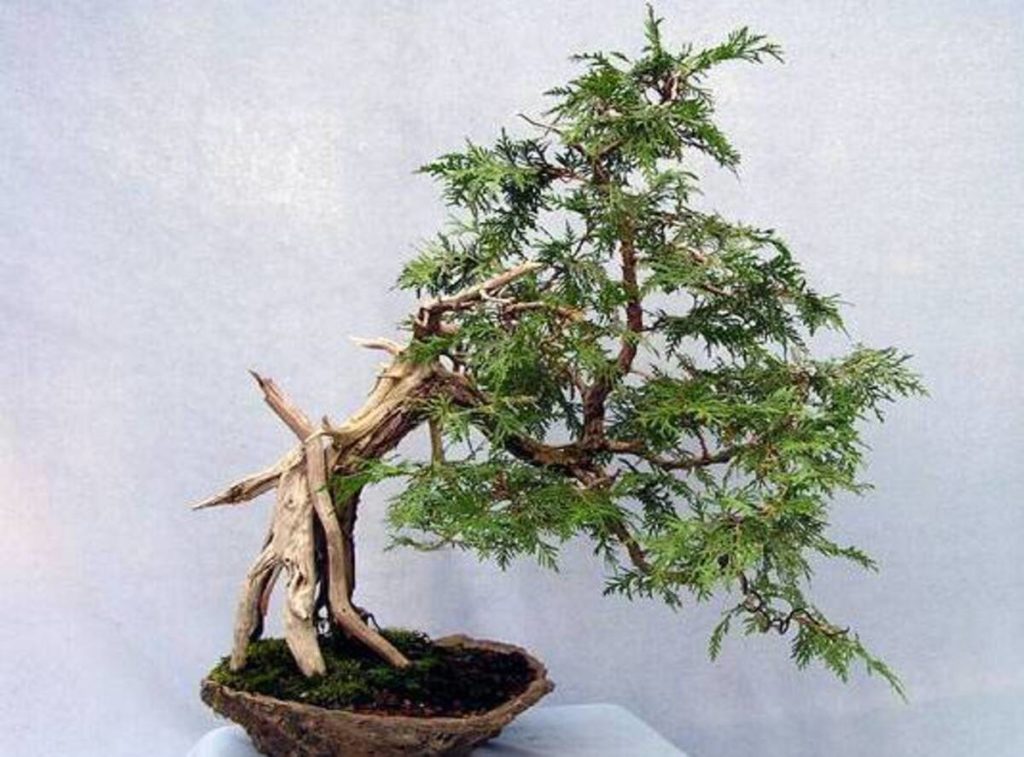
How to Grow Western Red Cedar Bonsai
To grow a Western Red Cedar bonsai, you need to be patient, pay close attention to the little things, and really know what the tree needs. To grow and take care of a Western Red Cedar Bonsai, follow these steps:
1. Selection and Acquisition:
Pick out a Western Red Cedar tree that is in good health from a reliable farm or bonsai shop. Find a tree with a strong, straight stem and bright green leaves.
2. Potting and Soil:
Use a bonsai soil mix that drains well, or mix akadama, pumice, and lava rock together to make your own. Every two to three years in the spring, repot your young Western Red Cedar Bonsai and cut back the roots to keep the plant small.
3. Placement:
The Western Red Cedar Bonsai does well in either full sun or some shade. Put your bonsai somewhere that gets a lot of sunshine during the growth season. In the winter, keep it safe from strong winds and frost.
4. Watering:
When the dirt feels a little dry, give your Western Red Cedar Bonsai a lot of water. Make sure the pot doesn’t hold too much water. Root rot can happen if the roots get too wet. You should change how often you water a tree based on its needs and the conditions where it is growing.
5. Pruning and Shaping:
To keep your bonsai in the shape and size you want, you need to prune it often. Use clean, sharp pruning tools to cut off any twigs and leaves that you don’t want. You can also use wiring to move the branches where you want them to be. During the growth season is when most pruning and shaping is done.
6. Fertilization:
During the growing season (spring and summer), give your Western Red Cedar Bonsai a balanced round of organic bonsai food. When the tree’s growth slows down in the fall and winter, cut back on or stop fertilizing it.
7. Pest and Disease Control:
Bugs like aphids, spider mites, and scale insects should be kept a close eye on. Use insecticidal soap or neem oil right away to get rid of pests. Fungal diseases can be avoided by letting plants breathe and not giving them too much water.
8. Wiring and Styling:
Gentle form the branches with bonsai wire. The best time to wire is in the spring, and the wire should be checked often to make sure it doesn’t cut into the tree’s bark as it grows. To keep the stems from getting damaged, be patient and don’t wire too quickly.
9. Regular Maintenance:
Check your Western Red Cedar Bonsai often for any signs of stress, disease, or bugs. Remove dead leaves and other junk from the pot and soil’s surface to keep the bonsai clean.
10. Patience and Observation:
Growing bonsai takes a lot of patience. Pay close attention to your tree and learn how it reacts to different weather situations, pruning methods, and style techniques. Your Western Red Cedar Bonsai will grow into a beautiful live work of art if you give it time and care.
Keep in mind that growing a Western Red Cedar bonsai takes time and patience. Every bonsai is different, but if you care for and watch your tree regularly, it will grow and change into a beautiful tiny version of nature.
Displaying and Showcasing the Western Red Cedar Bonsai
A significant aspect of bonsai cultivation, displaying and exhibiting your Western Red Cedar Bonsai enables you to appreciate its attractiveness and impart it to others. The following are some suggestions for displaying and showcasing your Western Red Cedar bonsai effectively:
1. Choice of Display Stand:
Choose a display stand or table that is aesthetically pleasing and complements the Western Red Cedar bonsai. Tables with an antique appearance or traditional wooden supports frequently serve the purpose of elevating the overall presentation.
2. Choosing the Right Pot:
Choose a bonsai container whose dimensions, design, and hue complement those of the tree. Typically, earthy hues such as beige, brown, or green are most effective, allowing the tree to remain the focal point. Stability and equilibrium should be imparted to the overall composition by the vessel.
3. Positioning:
Ensure that the Western Red Cedar Bonsai is positioned at or slightly below eye level so that observers can easily discern its intricate details without experiencing any strain. For a more natural and dynamic appearance, slight off-center the bonsai on the display holder.
4. Accent Pieces and Suiseki:
Consider adding accent pieces such as small figurines, stones, or suiseki (viewing stones) to the display. These elements can enhance the overall aesthetic and create a harmonious composition.
5. Seasonal Variations:
Rotate your bonsai display with the changing seasons. For example, during spring, you might accentuate the display with blooming flowers, while in autumn, fallen leaves or seasonal foliage can be added to enhance the theme.
6. Background and Lighting:
Choose a neutral background that does not distract from the bonsai. Soft, natural lighting, such as filtered sunlight, can highlight the tree’s features. Avoid harsh, direct sunlight, which can damage the foliage.
7. Regular Maintenance:
Keep the display area clean and free from dust or debris. Regularly prune new growth and maintain the bonsai’s shape to ensure it continues to look well-groomed and visually appealing.
8. Educational Information:
If displaying your Western Red Cedar Bonsai in a public setting, consider providing educational information about the species, its care, and the art of bonsai. This helps viewers appreciate the effort and artistry involved in bonsai cultivation.
9. Bonsai Shows and Exhibitions:
Participate in bonsai shows and exhibitions to showcase your Western Red Cedar Bonsai to a wider audience. Bonsai exhibitions provide an opportunity to learn from other enthusiasts, receive feedback, and share your passion for this art form.
10. Photography:
Capture high-quality photographs of your Western Red Cedar Bonsai from different angles and in various lighting conditions. Photography allows you to document your bonsai’s progress and share its beauty with others online or in print.
By following these guidelines, you can create a visually appealing and engaging display for your Western Red Cedar Bonsai, allowing both you and your audience to appreciate the artistry and natural beauty of your carefully cultivated tree.
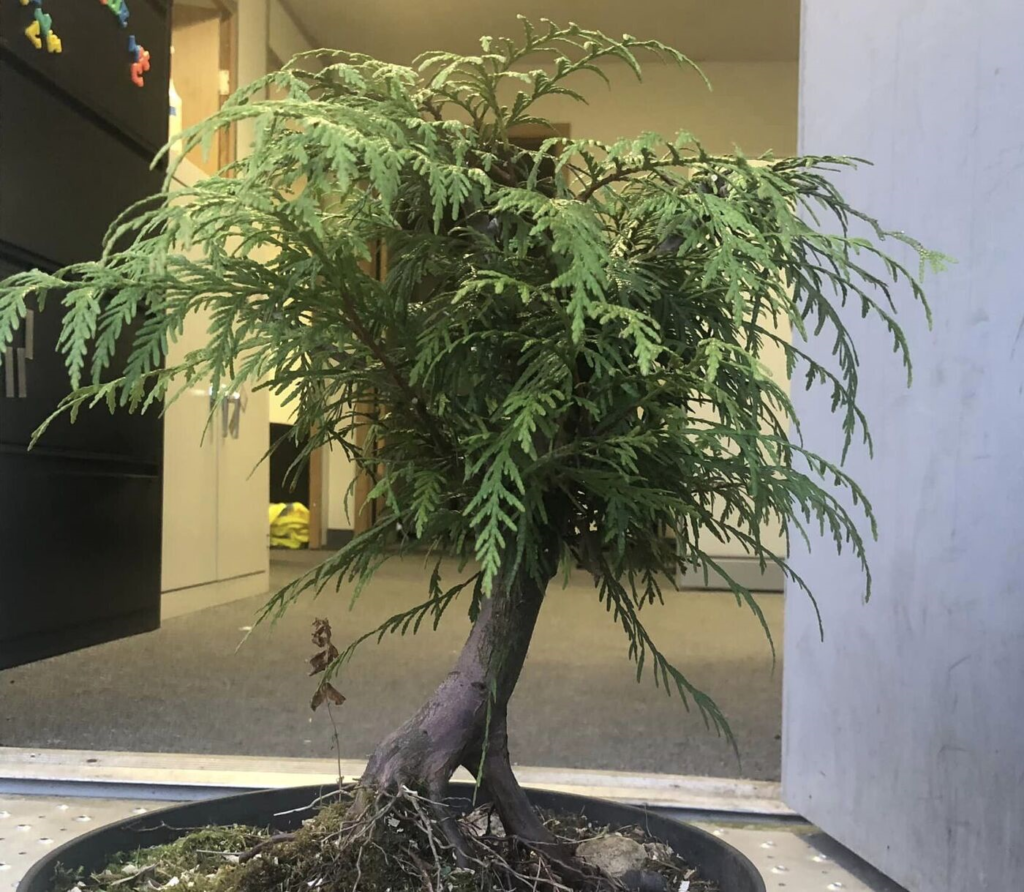
How to Care for and Maintain a Western Red Cedar Bonsai
A Western Red Cedar Bonsai needs to be cared for and maintained by following certain rules and giving it regular attention. This is a complete guide on how to take care of and keep up your Western Red Cedar Bonsai:
1. Watering:
Every day, especially when it’s hot and dry, check to see how much water is in the soil. When the dirt feels a little dry to the touch, water your bonsai well. Make sure the water can easily drain away so that the roots don’t get too wet, which can cause root rot.
2. Light and Placement:
Western Red Cedar Bonsai do best in full sun to some shade. Put your bonsai where it will get a lot of sunshine, usually early in the morning or late in the afternoon. Keep it out of the direct noon sun, especially if you live somewhere hot.
3. Temperature and Winter Care:
During the winter, keep your bonsai safe from very cold weather, freezing winds, and frost. It needs to be moved to a protected area or covered up to keep it safe from bad weather.
4. Pruning and Pinching:
Cutting back and pinching your bonsai on a regular basis will help it keep the shape you want. Get rid of any branches that aren’t needed and pinch back any new growth to make it spread out and get more dense. Most of the time, pruning is done in late spring or early summer.
5. Wiring and Shaping:
Gentle form the branches with bonsai wire. Spring or fall are the best times to wire. The stems of Western Red Cedar are pretty frail, so be careful not to wire them too tightly. Check wired twigs often to make sure they don’t cut into the bark.
6. Fertilization:
If you want to help your Western Red Cedar Bonsai grow, use a balanced liquid bonsai fertilizer in the spring and summer. During the fall and winter, when the tree is not growing, cut back on or stop fertilizing it.
7. Repotting:
Plant a new pot for your Western Red Cedar bonsai every two to three years in the spring, right when new growth starts. Cut back the roots and add new dirt to give the plant new nutrients and help it grow in a healthy way. Moving the bonsai to a new pot also keeps the roots from getting too crowded.
8. Pest and Disease Control:
Check your bonsai often for signs of bugs like aphids, spider mites, and scale insects. Use insecticidal soap or neem oil right away to get rid of any pests. To stop fungus diseases, make sure there is enough air flow and don’t water too much.
9. Regular Monitoring:
Keep a close eye on your bonsai to see if it changes in any way, like if the leaves turn yellow or if it gets any strange spots. Take care of problems right away to keep your Western Red Cedar Bonsai healthy.
10. Patience and Observation:
Growing bonsai takes a lot of patience. Pay close attention to your tree to learn how it grows and how it reacts to different ways of taking care of it. Your Western Red Cedar Bonsai will grow into a beautiful tiny version of its full-sized cousin if you give it time and care.
If you give your Western Red Cedar Bonsai the care it needs and follow these rules, it will grow and give you years of pleasure as a live work of art.
Western Red Cedar Bonsai Care Sheet
| Aspect | Care Tips |
|---|---|
| Watering | Check soil moisture daily. Water thoroughly when the topsoil feels slightly dry. Ensure good drainage to prevent root rot. |
| Sunlight | Place in full sun to partial shade. Shield from intense midday sun, especially in warmer climates. |
| Temperature | Protect from extreme cold, freezing winds, and frost during winter. Provide shelter or cover when temperatures drop. |
| Humidity | Maintain moderate humidity levels. Mist the foliage occasionally, especially in dry indoor environments. |
| Fertilization | Use balanced, liquid bonsai fertilizer during growing season (spring and summer). Reduce or stop in fall and winter. |
| Pruning and Trimming | Regularly prune to maintain shape. Trim new growth to encourage branching and density. |
| Wiring and Styling | Wire branches gently during spring or fall. Avoid tight wiring, check regularly, and remove wires before they cut in. |
| Repotting | Repot every 2-3 years in spring. Trim roots, replace soil. Prevents root-bound issues and refreshes nutrients. |
| Pest and Disease Control | Regularly inspect for pests. Treat infestations promptly with insecticidal soap or neem oil. Maintain good ventilation. |
| Winter Care | Protect from frost and freezing winds. Move to sheltered location or use covers. Reduce watering in colder months. |
| Regular Maintenance | Monitor for changes in appearance. Address issues promptly. Keep the bonsai clean, removing debris and dead leaves. |
Remember that each bonsai is different, so change how you care for your Western Red Cedar Bonsai based on what it needs. Keeping an eye on it and giving it careful attention will help it grow and stay beautiful over time.
Conclusion
It can be fun and rewarding to grow Western Red Cedar bonsai as a hobby. If you follow these easy steps, you can grow a beautiful bonsai tree that brings the beauty of nature into your home. Remember that care and patience are the keys to a tree that grows well. Have fun growing!
FAQ
Q: Can Western Red Cedar Bonsai be kept indoors?
A: Western Red Cedar Bonsai can survive for a short time inside, but they do best outside where they can get plenty of sunshine and air flow. To keep the bonsai healthy, you need to pay close attention to the light, humidity, and temperature when growing it indoors.
Q: How often should I water my Western Red Cedar Bonsai?
A: Regularly check the soil’s level of wetness and water the bonsai when the dirt feels a little dry. How often you water depends on things like the weather, the size of the pot, and how well the dirt drains. It’s important not to water too much or too little.
Q: When is the best time to prune my Western Red Cedar Bonsai?
A: Most of the time, pruning is done in late spring or early summer, when the tree is growing quickly. Get rid of twigs that aren’t needed and trim new growth to keep the shape you want. Do not prune too much in the winter or when the plant is dormant.
Q: Can I wire my Western Red Cedar Bonsai branches?
A: You can bend the branches of your Western Red Cedar Bonsai by wiring them. Be careful when using bonsai wire, and keep an eye on the twigs often to keep the wire from cutting into the bark. Spring or fall are the best times to wire.
Q: How do I protect my Western Red Cedar Bonsai during the winter?
A: Move your bonsai to a quiet place, like a cold frame or a closed closet, to protect it from frost and freezing winds. If you keep the bonsai outside, cover it with frost cloth or burlap. Lessen how much you water in the winter so that freezing dirt doesn’t hurt the roots.
Q: How often should I repot my Western Red Cedar Bonsai?
A: You should move your Western Red Cedar bonsai to a new pot every two to three years in the spring, right when new growth starts. Changing the pot helps the dirt stay fresh, the roots stay short, and the bonsai stays healthy. The bonsai also stays root-bound when it is repotted.
Q: Can I grow a Western Red Cedar bonsai from seeds or cuttings?
A: You can grow a Western Red Cedar bonsai from seeds or cuttings. But you have to be patient if you want to start from seeds because cedar trees grow slowly. Most plants are grown from clippings, but you have to be very careful to make sure the young plant roots and grows well.
Q: Is it necessary to use special bonsai soil for my Western Red Cedar Bonsai?
A: Yes, you need to use a bonsai soil mix that drains well for Western Red Cedar Bonsai. The right dirt lets air flow and water drain properly, so roots don’t get too wet. These trees do well in soil mixes made just for bonsai, like those with akadama, pumice, and lava rock.
Q: Can Western Red Cedar Bonsai be styled in different bonsai forms?
A: Western Red Cedar Bonsai can be shaped in a number of classic bonsai styles, such as formal upright, informal upright, flowing, and windswept. The tree’s flexible branches and leaves make it good for a wide range of bonsai styles.
Q: How long does it take for a Western Red Cedar Bonsai to mature?
A: The time it takes for a Western Red Cedar Bonsai to mature varies based on factors such as its age, growth conditions, and styling goals. Bonsai cultivation is a patient art, and it may take several years or even decades for a cedar bonsai to achieve its desired mature appearance.
Also Read:




